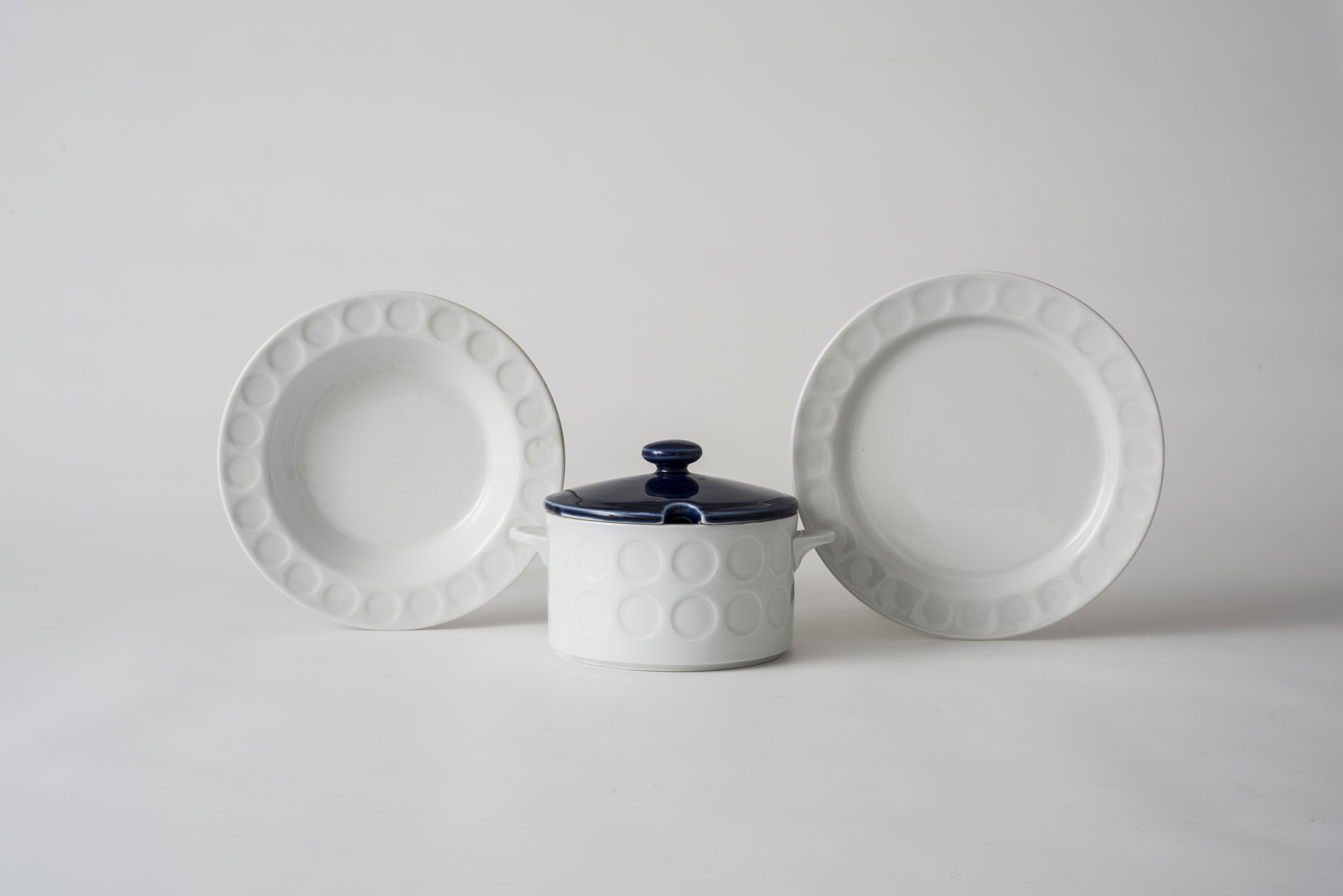Die Fahne des Suppentellers (im Bild links) zeigt das für die Produktserie charakteristische plastische Dekor aus kreisrunden Flächen, hier in einreihiger Abfolge.
Das 1969 vorgestellte blau-weiße Mehrzweckgeschirr ist für Gastronomie- wie für Haushaltsnutzung geeignet.
Weitere Teile aus der Produktserie DUETT sind unter folgenden Inventar-Nrn. im Bestand vertreten: 8750/96-DDR, 10933/07-DDR, 4510/00-DDR, V 19 und V 21.
en

